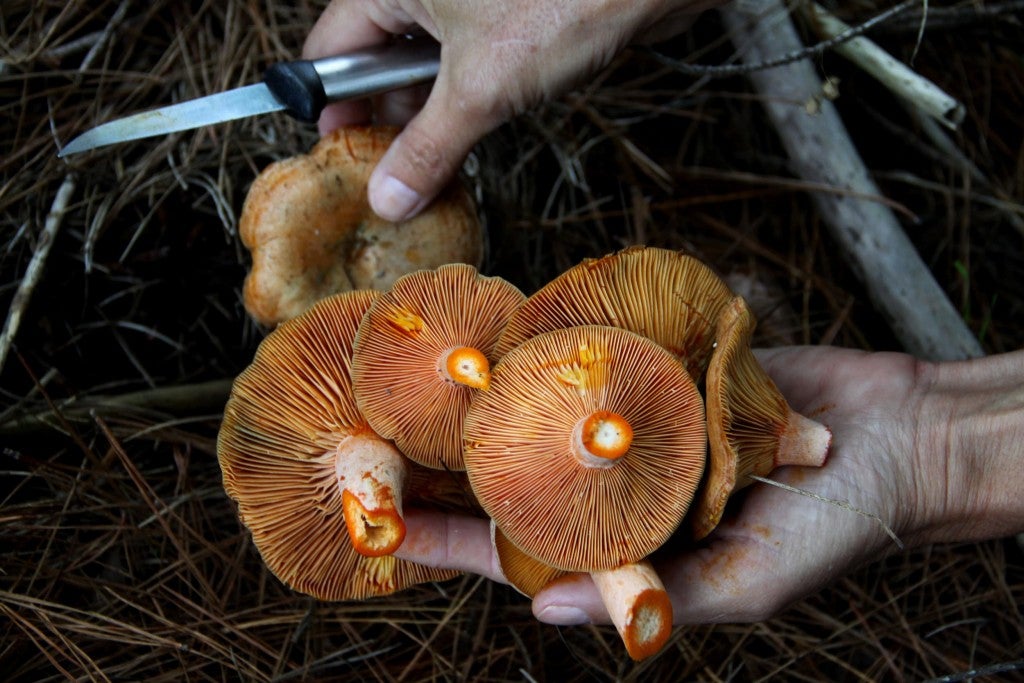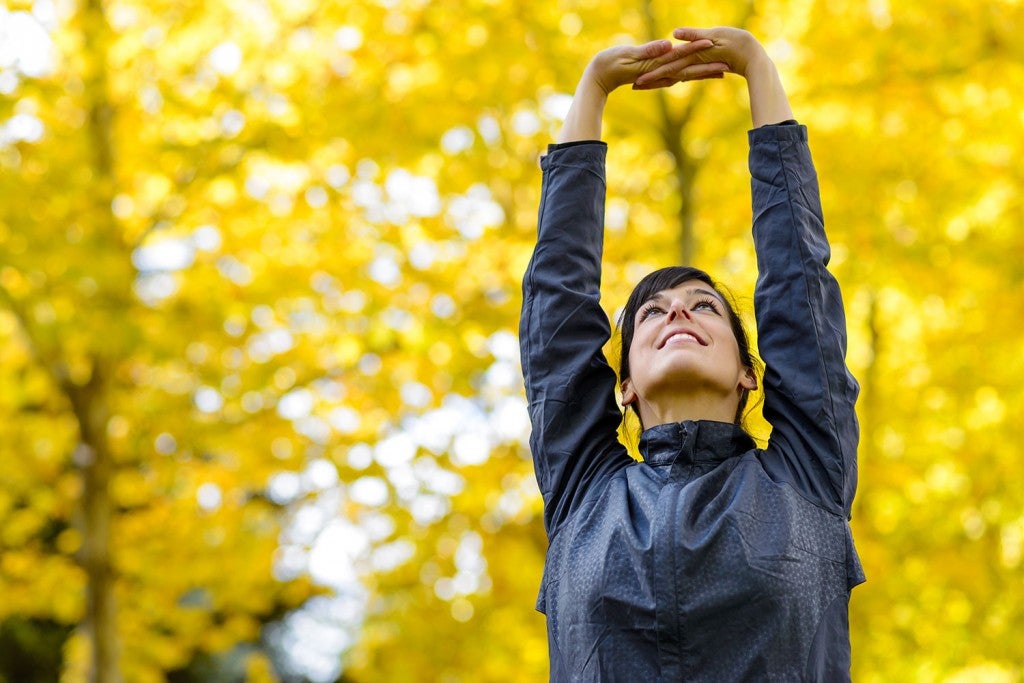This introduction to Vinyasa yoga is brought to you by OOFOS, whose sport sandals with arch support are perfect for easing your tired feet after that long hike to your campsite.
You’ve finally arrived at your walk-in campsite and your legs are killing you. Or maybe your back’s tightened up from carrying that 40L pack around all day, or simply from lugging a cooler full of cold ones down to the lakefront. Sure, you can stretch, but if you’ve already tweaked something, it’s hard to say if some simple stretching will do the trick.
Or maybe you’re not sore at all. Maybe you just haven’t felt that “aaah” feeling you’ve been expecting to hit since setting foot in the wilderness. You’re out here, you’ve got a beverage in hand and a pup by your side, but it’s just not hitting you.
Looking for that extra something to take you from chill to chill? Enter vinyasa.
What Is Vinyasa Yoga?
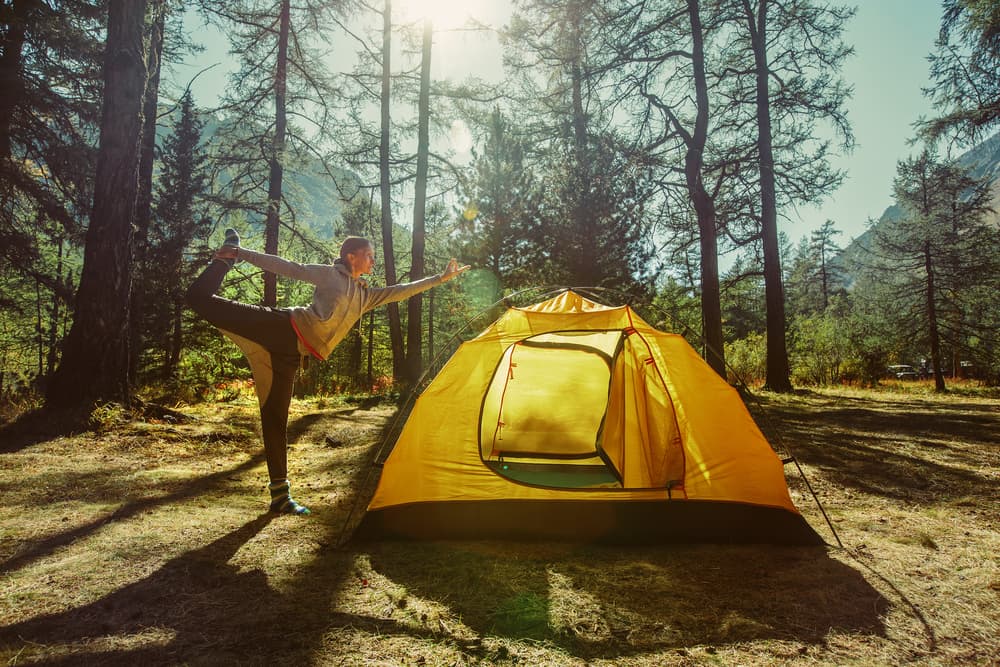
So maybe yoga isn’t the first thing you picture yourself doing to unwind, much less at the campground. But vinyasa in particular is a type of yoga that is well-suited to even the most skeptical of aspiring yogis because it is characterized by smooth, flowing movements that are meant to synchronize with your breathing. This makes it both relaxing and physically beneficial for your muscles and sore limbs.
So we know it’s yoga, but what is Vinyasa, exactly?
Originating as early as the Vedic age (1500 – 500 BCE), the practice of Vinyasa yoga began with T Krishnamacharya, who established the majority of modern yoga practices. From the get go, Vinyasa was focused on breathing and the idea that things, by nature, are temporary, making it a practice that emphasizes connected movements that are always changing, with little emphasis on stiff, formal poses and positions. Compare this to more stable, position-focused practices like Bikram yoga (which rotates through the same 26 poses), and you have the primary reason that Vinyasa is perfect for both beginners and campers looking for a nice, easy way to unwind.
At its core, Vinyasa is all about moving your limbs and body in a meaningful way, bringing positivity and consciousness to each movement. Linguistically, the word vinyasa literally means ‘to place’ (nyasa) ‘in a special way’ (vi). It is based on the fundamental understanding that each movement we make has the ability to express how we think and feel on the inside.
Key Characteristics of Vinyasa Yoga
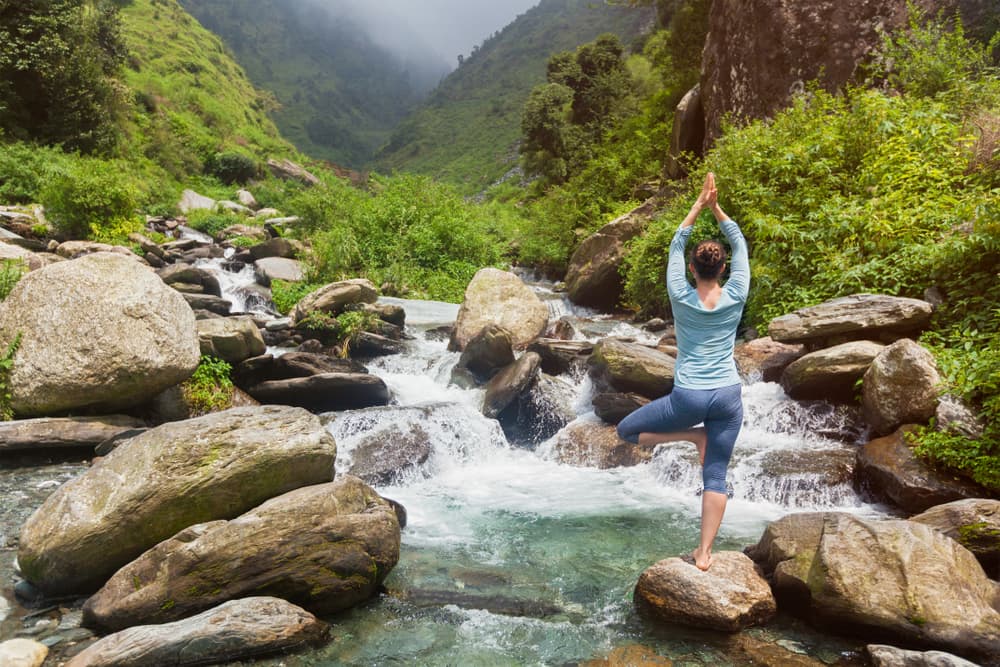
Given the free-flowing nature of Vinyasa Yoga, the central characteristics of the practice often depend on the context in which it’s done. In a workout setting, Vinyasa is characterized by more abrupt transitions from move to move, all matching a rhythmic breathing sequence designed to keep your body in total sync.
In restorative sessions, the transitions and poses might be a tad slower, with ample contemplation space built into the experience. One of the most prominent characteristics of Vinyasa is its variability in both sequence and pattern. There are no sessions that are alike when it comes to Vinyasa, enabling it to be practiced anywhere there’s space for a yoga mat.
Finally, Vinyasa is known for its complete approach to yoga, featuring classes that move through all of the asana families (groupings of postures based on type: standing, backbends, etc.) in a single session, making it ideal for a total body experience. Though this can sometimes make it difficult to remember each step in a given class, it also makes Vinyasa the perfect introduction to basic yoga, including its ability to provide total body relaxation.
Vinyasa Tips for Beginners
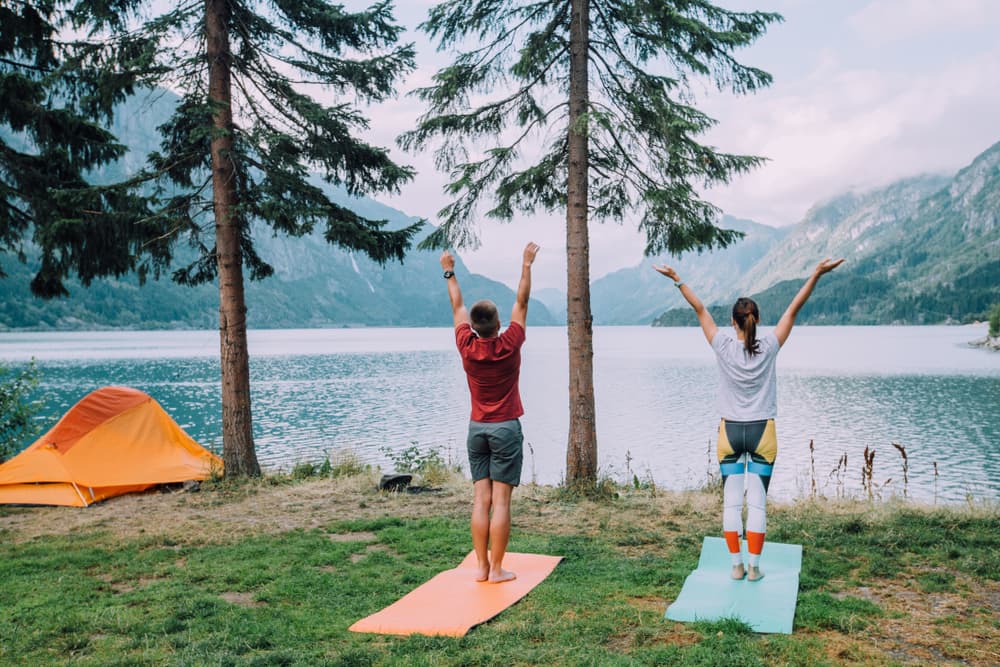
Since we’re assuming a session of campground yoga will not be a workout, we’ll focus on the characteristics of a beginning restorative Vinyasa session, including a couple of tips on how to monitor your own breathing and motion.
1. Find the Perfect Spot
Whether or not you thought to bring a yoga mat, initiating your Vinyasa journey starts with finding the right space. Craving some sunshine? Park your mat or blanket in some grass near your campsite, or on the shore of the alpine lake you’re camping near. Looking for a quieter, more remote yoga session? Try the trees just behind your site, if they’re well separated, or consider hiking to a location deep in the forest, where you can get your zen on without the fear of others judging how long you can stand on one foot.
2. Center Yourself
Worried about how you’re going to hike out tomorrow on those blistered feet? Can’t stop thinking about the dinner you’re about to chow? Preoccupied by your aching muscles? Whatever it is, work to push it to the back of your mind, even if only for a few minutes while you start to gather yourself for the upcoming session. Vinyasa is all about unity of mind and body, so balancing out your overactive brain is the first step to really getting into the swing of things.
3. Pick Flow Exercises That Suit Your Level
If you’re a total newbie, pick the exercises that seem to suit your basic fitness level, and don’t feel like you have to hold anything for longer than feels mildly comfortable. Match your breathing to your poses so that you’re flowing through each motion, and take care to treat yourself at the level you’re at, not the level you aspire to reach.
4. When All Else Fails, Chill Out
If you try and fail to find the breathing and movement rhythm you’re looking for, there’s nothing wrong with going for the traditional meditation pose (that counts as yoga, right?). The goal of practicing Vinyasa somewhere like the campground is to allow your body to flow in perfect sync with your mind, and if the prescribed exercises aren’t doing that, take a break to meditate and try again. Dwell on the scenery around you, the lapping of the lake you’re sitting near, or the delicious meal you’re going to cook. All in all, don’t push yourself too hard, particularly if you’ve just endured a long day on the trail.
Whether you’re trying to relax after a long day of hitting the trails, or the wilderness has simply inspired to get more in touch with your inner self, Vinyasa can be an effective way to recover from a day of heavy effort, or to start off the day on the right foot.
Speaking of feet, we’d be remiss if we didn’t mention our absolute favorite recovery shoes, available from OOFOS. Available as sport slide sandals or close-toed shoes, OOFOS’ products are the comfiest way to recover after the long trek into your campsite. They’re a convenient, lightweight, high-quality option, like a hug for your feet while your getting into the swing of things during your campfire Vinyasa session!
This post was brought to you by OOFOS

Check out their sport slides for all of your recovery needs!
The Dyrt is the only camping app with all of the public and private campgrounds, RV parks, and free camping locations in the United States. Download now for iOS and Android.Popular Articles:
Articles on The Dyrt Magazine may contain links to affiliate websites. The Dyrt receives an affiliate commission for any purchases made by using such links at no additional cost to you the consumer.


